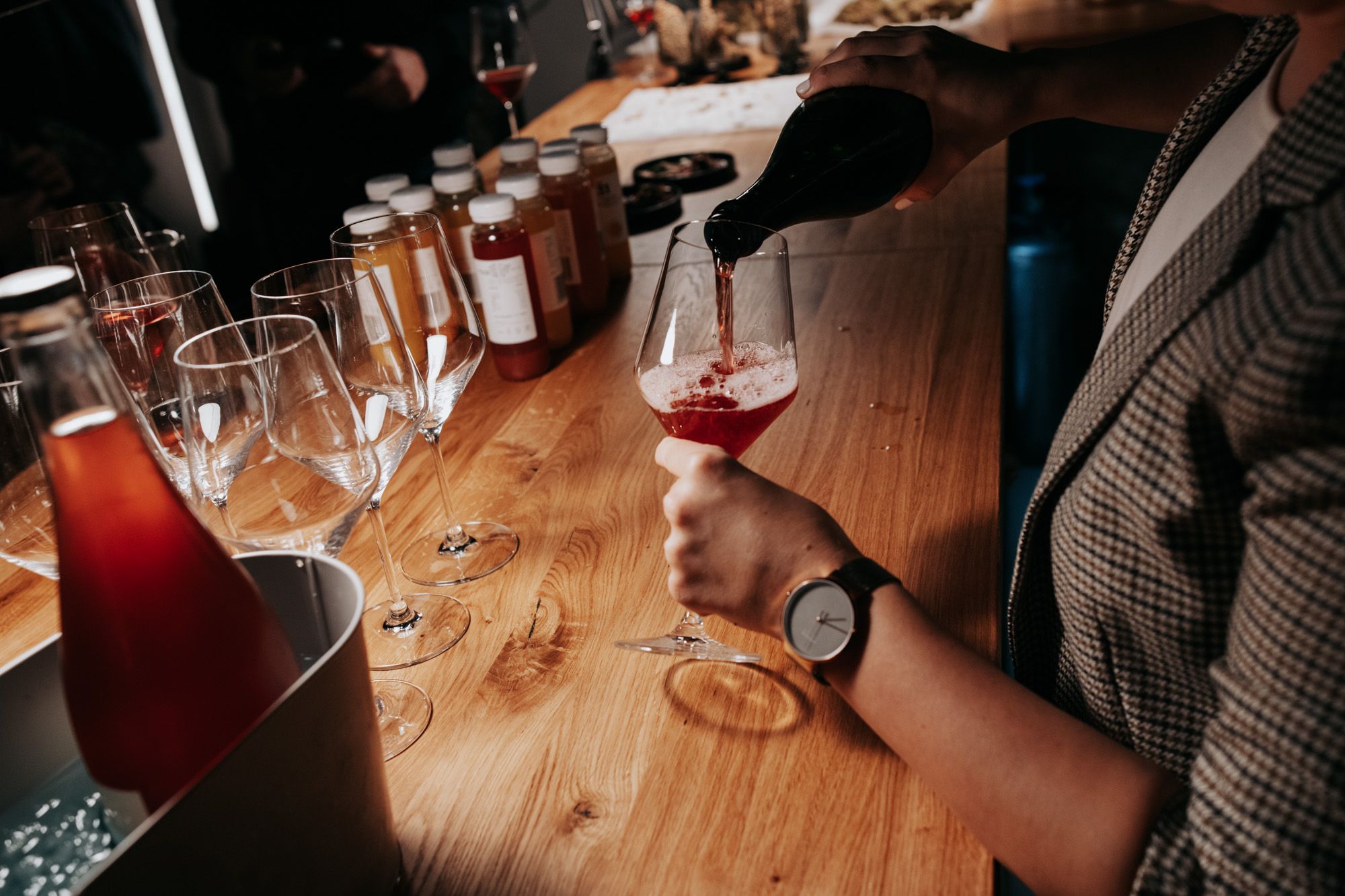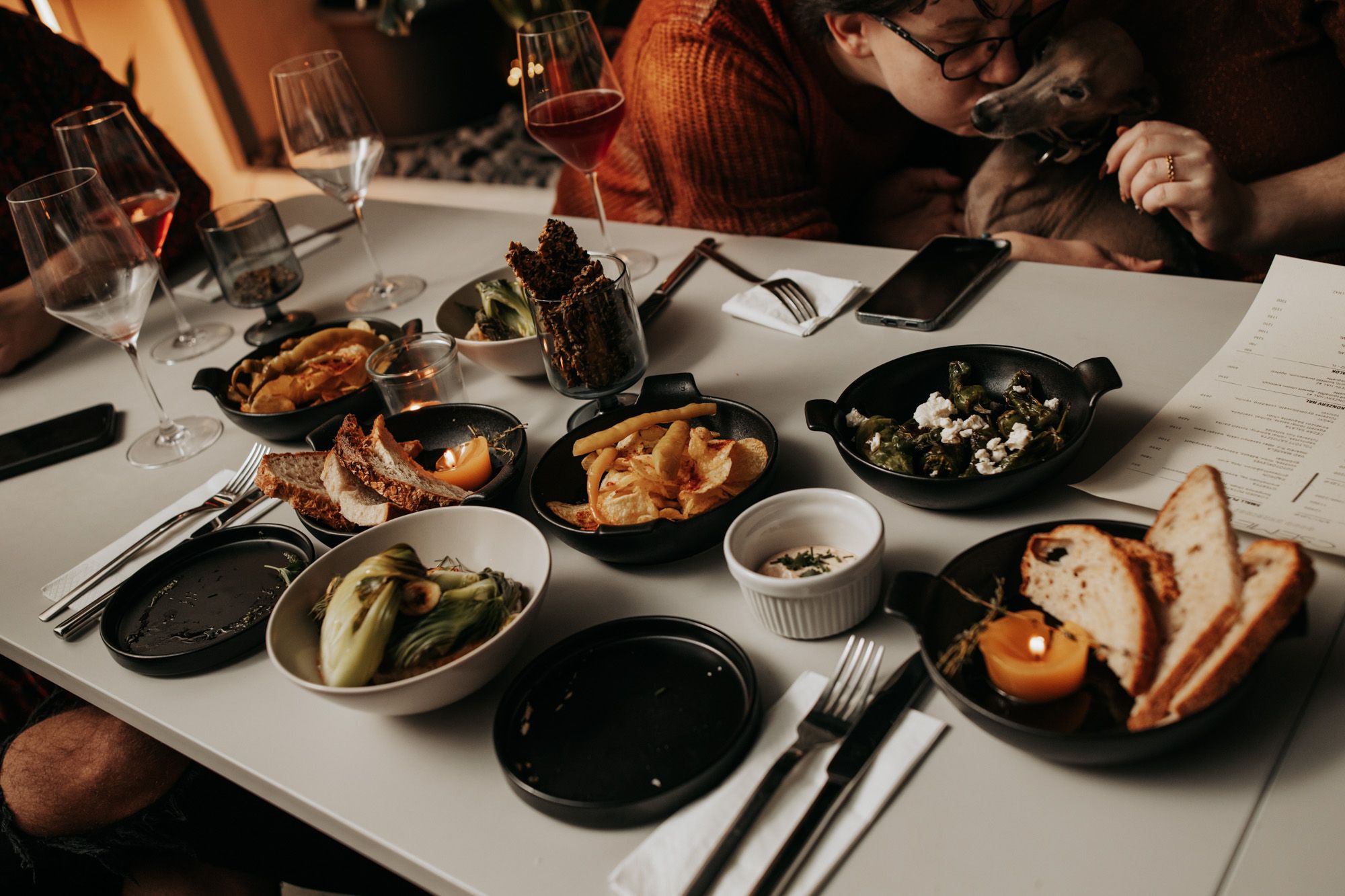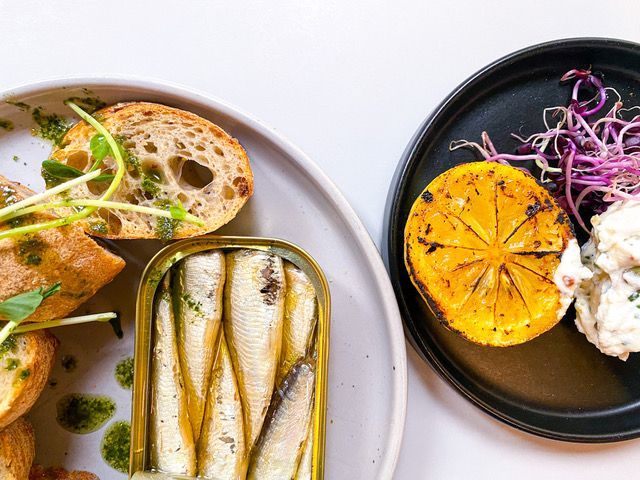Most of us like to discover new things, but sometimes it’s more comfortable to stick with what we know. When you know that where you’re going, there’s an open door, good vibes, and a warm welcome with delicious food and coffee that’s been tried and tested elsewhere. Just like a good neighbor—they know you, so they know how much they can surprise you. I know just the place on Kecskemét Street in downtown Budapest: Csemege.
The terms ‘csemege’ and ‘közért’ represent a concept dear to the Hungarian heart. It spread in the fifties and sixties and was used to mean a grocery store that offered everything a household could need, albeit in small quantities. Dry goods, bakery products, cold cuts, dairy products, and even household supplies and utensils were all part of the range of the Belvárosi Közért Vállalat (meaning Downtown Grocery Corporation—the Transl.). The aim was to ensure public supplies through the operation of shops and to set an example in the application of commercial methods. In theory, this period ended with the regime change, and in practice, with the spread of international grocery chains. The word ‘csemege’ has survived, although only a few small housing projet shops and shabby signposts commemorate them today. Even I remember them from my childhood in the nineties. Perhaps the Asian discount are the ones filling in the void they left, but we all know it’s not the same. We miss Auntie Ilonka behind the counter, the smell of strong black coffee and smoked meat, the fridge humming in the corner, the steam condensing on the long-life milk bags, and the packets of cocoa powder or biscuits lining the shelves. As retro as all this is, it has its charm.

Perhaps a similar vision captivated the owners of the eateries fekete, major, norma, and norma/grand, including András Gerzsenyi and Gergő Gecse, whenever they walked by the glass window of the shop, abandoned for years, next to the flagship bakery on Kecskeméti Street. ‘Csemege,’ proclaimed the dusty but proud sign, but the inside was even less lustrous. In recent years it had been seen as a characterless shop/pub and a meeting place for local workers, but it was clearly not going to last much longer, and the pandemic had indeed closed the door for good. Since András and the team were on good terms with the owner, they started talking about the potential of the property, especially since it was located in an otherwise great neighborhood. At first, they wanted to open a pasta place or a pizzeria, but they dropped that idea. They also knew that since it was relatively close to both fekete and norma, they didn’t want to develop the same profile, as it wouldn’t have made much sense. One thing was for sure, though: it had to have a Gozney oven, which would provide the main character.

Months went by, and the concept slowly took shape, while they struggled to get permits, and, of course, the pandemic and inflation certainly didn’t help either. However, the team, especially Gergő, believed that it could become a perfect meeting point, a place that would be in perfect harmony with the city, where you could drop in at any time. It’s a bit like this and a bit like that, but that’s what makes it so lovable. It was important to create a symbiosis with the axis of Kálvin and Ferenciek Squares and the area around Egyetem Square, but not to compete with the ever-growing gastronomic offer. Finally, in December, Csemege opened its doors and brought with it a little bit of everything the heart could desire.



Rather than picking and choosing between inspirations, the style was created by combining them. For example, the team has become very fond of the Portuguese canned fish bar concept—not the tomato herring stashed in the pantry as a last resort, but the top-of-the-line, special inside and out, premium products that offer the best of the sea, be it shellfish or octopus. And then there’s the world of organic wines, something they were committed to when they opened nor/ma grand—so they got featured on the menu, as well. Of course, specialty coffees and sourdough bread were not left out either, as several menu items are built around them, for example the lemon cheese grilled sandwich (prepared in the aforementioned oven) based on a combination of different cheeses and béchamel, a croissant mille-feuille, or a pistachio tiramisu.

Certainly, the brunch menu, available until mid-afternoon, features a couple of twists, such as the vegan, gluten-free pulled mushroom taco with king trumpet mushroom, spicy pesto, and avocado, or the homemade kimchi omelette. There’s also a different lunch menu every weekday, with an emphasis on vegetables (such as za’atar hummus with beetroot and fennel or pumpkin cream soup), and from Thursday to Sunday evenings it’s nibbling and sipping time with so-called small-plate dishes such as flavored butter that melts like a lit candle, chicken Hortobágyi palacsinta (a savory crêpe filled with meat—the Transl.), or floating island dessert. They sometimes organize thematic days, as well, such as cottagecheese-dumpling-day, lángos-day, and wine tasting with invited wineries.


It may all seem too diverse at first, but that’s the beauty of it. As you enter their self-designed space, greeted by a rustic (yet not overly minimalist) style, and you look at Péter Weiler’s paintings on the wall, or browse the deli shelf, you slowly begin to lose your inhibitions and start to feel cozy and relaxed. This is why I think that, although it’s still in its infancy, Csemege has everything it needs to become a regular spot to many.
Following the city’s heartbeat, from morning till night, here you will find anything that you’re looking for.
Csemege | Facebook | Instagram
Source: HVG

New NASA spacesuit revealed











